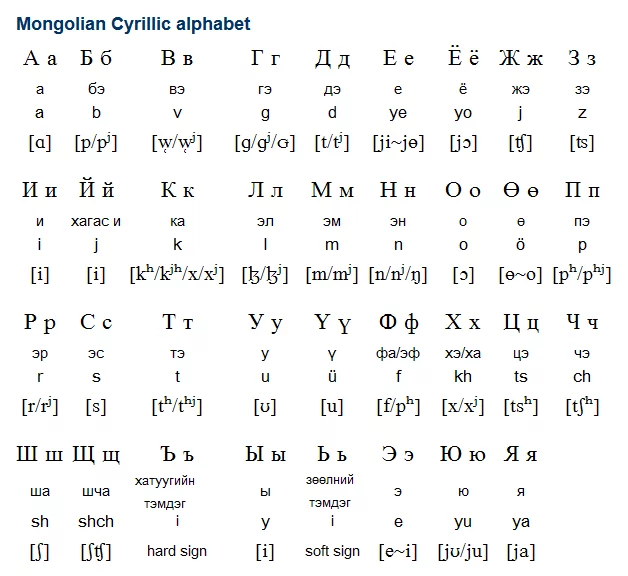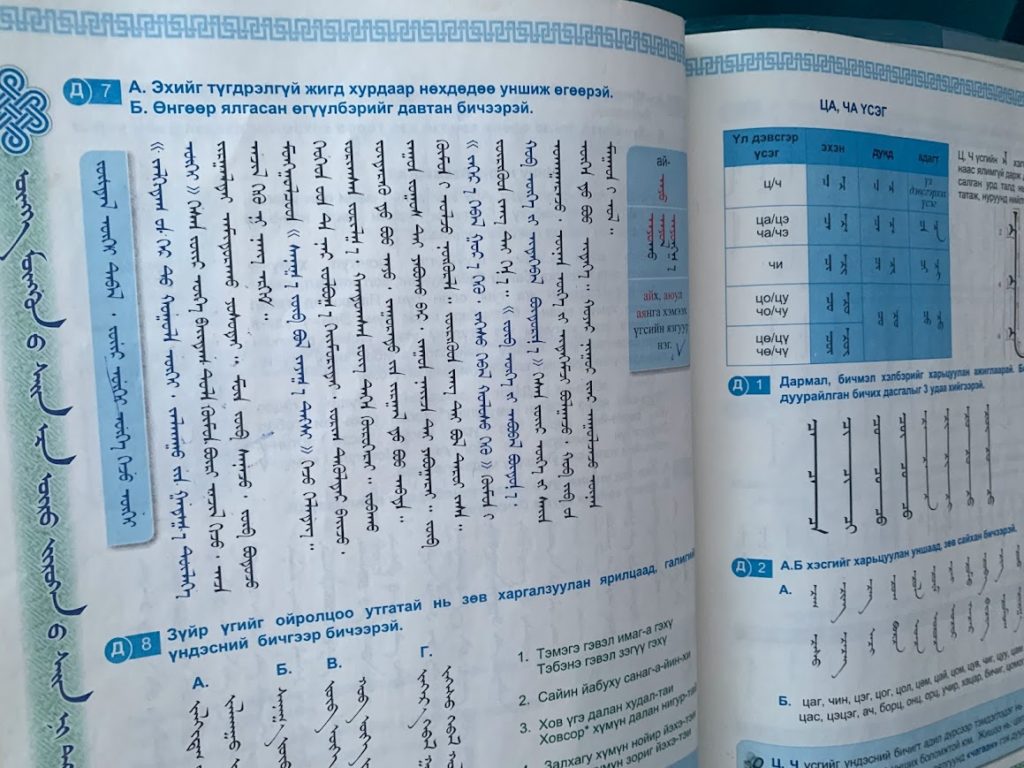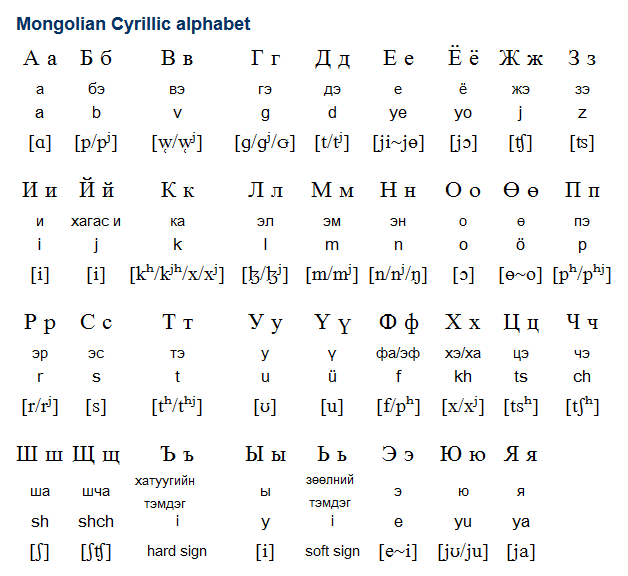Most people who are not aware of Mongolian culture would assume the writing system in Mongolia is either Mandarin or somewhat related to other East Asian languages. It is an understandable misconception as Mongolia was a former colony of Manchuria until 1911 and is a neighbor of China, however, it still is a misconception as Mongolia today uses the Mongolian Cyrillic for its writing system.
Reasons Why Mongolians Write in Cyrillic Instead of Traditional Mongolian Script
There are several reasons why Mongolians write in Cyrillic instead of traditional Mongolian script:
1. Historical Influence: During the Soviet era, Cyrillic script was introduced to Mongolia in the 1940s, and it became widely adopted.
2. Political Reasons: In 1946, the Mongolian government declared Cyrillic as the official script to promote literacy and standardize the language.
3. Ease of Use: Cyrillic script is easier to type and print than traditional Mongolian script, which is more complex and requires specialized fonts.
4. International Communication: Cyrillic is also more widely recognized internationally, making it easier for Mongolians to communicate with people from other countries.
5. Economic Reasons: Many Mongolian businesses and institutions use Cyrillic script for their official documents and correspondence, making it the dominant script in the country.
The Mongolian Language & Change in Alphabets
The Mongolian language has its origins in the Mongolian Empire, which was established during the 13th century by Genghis Khan, but shared a lot of commonality with Turkic languages such as Kazakh and Uyghur. It is a member of the Mongolic group of languages and is spoken by approximately 5.7 million people mainly in Mongolia, Inner Mongolia, and some parts of China, as well as in diaspora communities across the world.
The oldest evidence of written Mongolian language can be traced back to the Mongol royal decrees of the 13th century, which were written in a vertical script derived from the Uighur script. However, this script was gradually replaced by a horizontal script known as the Classical Mongolian script, or Hudum Mongol bichig, during the 14th century.
This script was used for official and religious purposes until the early 20th century.
In the early 20th century, the Mongolian government began to promote the use of a Cyrillic-based script to help with literacy and to help modernize the country. Though Latin alphabet was adopted for a short period of time, In 1941, the use of the Cyrillic script became official in Mongolia, despite resistance from traditionalists who advocated for the continued use of the Classical Mongolian script.
The Soviet Union, which had significant influence in Mongolia at the time, also played a role in promoting the Cyrillic script.
Today, the Cyrillic-based script is widely used in Mongolia, and it is the only official script used for writing Mongolian. However, there are still efforts to revive and preserve the Classical Mongolian script, and it is still used in some traditional contexts, such as the transcription of religious texts and calligraphy.
Why Mongolians Still Use Cyrillic Alphabet

The traditional Mongolian script was complex and lacked standardized spelling, which made it difficult to learn and use. On the other hand, the Cyrillic alphabet had a standardized spelling system that made it easier for Mongolians to learn and communicate in a more efficient way.
Also due to politics, Mongolia shares a border with Russia, and the Cyrillic alphabet is widely used in Russia and other neighboring countries. This has made it easier for Mongolians to communicate and interact with these countries.
But mainly, changing the alphabet system would require significant investment in education, publications, and other materials. This would be a time-consuming and costly process that may not have a significant impact on the economy or society.
However, by 2025, the Mongolian government has made it a goal to transition into the classical script when it comes to government documents, but realistically, I see it will take a long time if such a transition will actually takes place.
Why Inner Mongolia Uses Traditional Script

Inner Mongolia uses traditional script because it has a long history and rich cultural heritage associated with it, and since it remained a part of China, without the influence of Soviets, Southern Mongolia retained the classical script.
Additionally, the use of traditional script has been encouraged by the Chinese government as a way to promote ethnic minority cultures and languages. The government has provided support for the preservation and development of traditional scripts and has also established schools that teach traditional scripts.
Overall, the use of traditional script in Inner Mongolia is seen as a way to preserve and celebrate the region’s unique cultural identity while also promoting diversity and inclusion.
Frequently Asked Questions
Do Mongolians use “Russian Letters”?
Mongolian Cyrillic, while very similar to other Slavic writing systems, has 2 extra letters and is actually a language that’s completely different from Eastern European and Eastern Asian languages. The root of the Mongolian Language is believed to have originated in either Siberia or Central Asia.
The Cyrillic Alphabet itself was introduced by Cyril, an orthodox missionary and philosopher, who migrated from Greece to Moscow during the reign of the Byzantine Empire. Slowly over the years his teachings spread throughout Eastern Europe and his writing system came to be the most popular. For a more in-depth history of Cyril specifically, you can read at Blazing Bulgaria.
Do “Outer” Mongolians learn traditional Mongol script?
Most middle schools teach the traditional script for a few years and a lot of people would be able to make out the general idea when reading in Mongolian script. The traditional script is still a part of Mongolia’s cultural identity and history, denying it would be a sacrilege to Mongolian ancestors. During holidays, festivals, and exhibitions you will also come across Mongolian script for cultural and aesthetic reasons.
What was the original writing system in Mongolia?
Before the adoption of the Cyrillic script, Mongolia used a unique vertical script known as “Mongol Bichig.” It was written vertically from top to bottom and used to write the Khalkha Mongolian dialect, among others.
Why is Mongolia planning to replace the Cyrillic script with the traditional alphabet by 2025?
The Mongolian government announced plans for a “comprehensive restoration” of the traditional alphabet as part of a broader push to strengthen Mongolian culture and identity. This move is seen as Mongolia moving away from Russian and Soviet influence and reasserting its cultural heritage.
The Mongolian government has ordered the Department of Information and Communication Technology and the Ministry of Education, Science, and Sports to take transitional measures to prepare for the change. Schools are required to increase learning time to study the traditional script as a compulsory subject.
Is Mongolian Cyrillic the same as Russian??
The Mongolian Cyrillic alphabet includes two letters not found in the Russian Cyrillic: Өө (O with two dots above, pronounced like the “ur” in “burn” without the r sound) and Үү (U with two straight lines above, pronounced like “u” in “flute”).
Can Mongolians read Russian?
Yes, many Mongolians can read Russian, especially those educated during the socialist period (1921-1990) when Russian was taught in schools as a second language. The use of the Cyrillic script in both languages does facilitate this to some extent.
However, knowing how to read the Cyrillic script does not necessarily mean that a Mongolian speaker can understand Russian. Although they share a script, Mongolian and Russian are very different languages, with distinct vocabularies, grammatical structures, and pronunciation rules.

